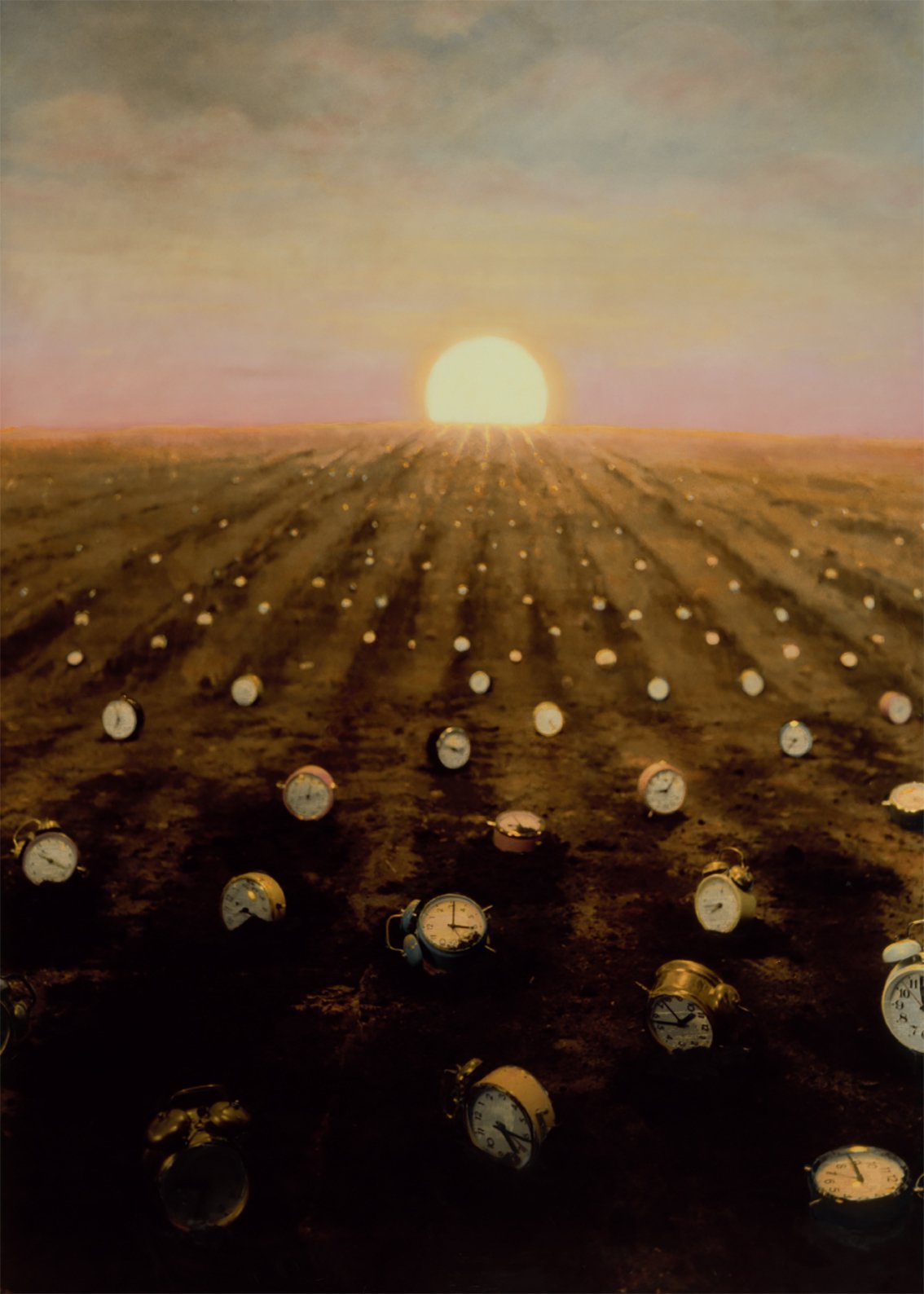Heather Snider: How would you describe the connection between the real world and the world in your imagery?
Teun Hocks: I do not see the world around me like that, but the exaggerated world I make up in my work helps me to tell the story the way I want to tell it. But sometimes the real world is even stranger and can give me ideas for new pieces.
HS: Some of your images seem to be pointed metaphors for the human condition, while others feel more like open-ended depictions of dreams or fantasies. Would you agree? Or do you see your work as a combination of both, or something else entirely?
TH: I agree, and sometimes I hope it is a combination of both.
HS: How conscious are you of the underlying meanings in your work?
TH: I choose to leave my works untitled because I would like the spectator to have his own thoughts, make his own story and fantasy about what is seen.Those are not necessarily the same thoughts that I had when making the work.
HS: The main character in your work has often been described as lonely or isolated, but it seems that viewers connect to the situations your “everyman” is experiencing, so that your work is more about shared humanity than isolation. Do you agree? Or do you feel that isolation is at the core of human experience?
TH: Difficult question; I tend to agree with both views. It would at least be nice if there were some consolation for the viewer in my work, but that’s never on my mind when I’m working.
HS: What do you hope the viewer will gain from your work?
TH: Not much, a smile, maybe a good feeling.
HS: What emotional or psychological impulses do you work out for yourself by bringing these images into existence?
TH: I wish I knew exactly what is needed to do that; I probably could make more work.
HS: One of the works featured here, depicting a field of alarm clocks (217. Untitled/ Zonder Titel, 2007) is unique in not having the main character that features in almost all of your work. Can you tell us about this piece?
TH: It’s a challenge for me and I always like to come up with a piece in which I don’t need to appear. It is not the first time that I’ve done this, it hasn’t happened very often. This one started with a drawing that kept appearing in my sketchbooks until I felt it was strong enough to make a work out of it. It is not so easy to explain exactly what attracted me in this drawing. Of course one of the things that came to my mind here is the contrast between the extra sentimental sunrise on the quiet land and (on a second glance) the growing alarm clocks that refer to all the things that have to be done.
HS: Because you use yourself as your model and main character, the process of your own aging appears in your imagery. How do you see age or aging as an element of your work? How do you feel that your art, your ideas, and yourself have evolved over time?
TH: Making my first pieces, I never realised that aging would later play a part in my work. Now I feel my aging is something that works in my favour, it makes the images more serious, and more ridiculous also. Apart from my thinning hair, it is difficult to see for myself how my art, my ideas, have evolved over time. To know that, I think one needs a lot of distance. Of course, I hope my work has evolved but when I’m starting on a new piece I always feel I’m starting from scratch.
Text by Heather Snider

